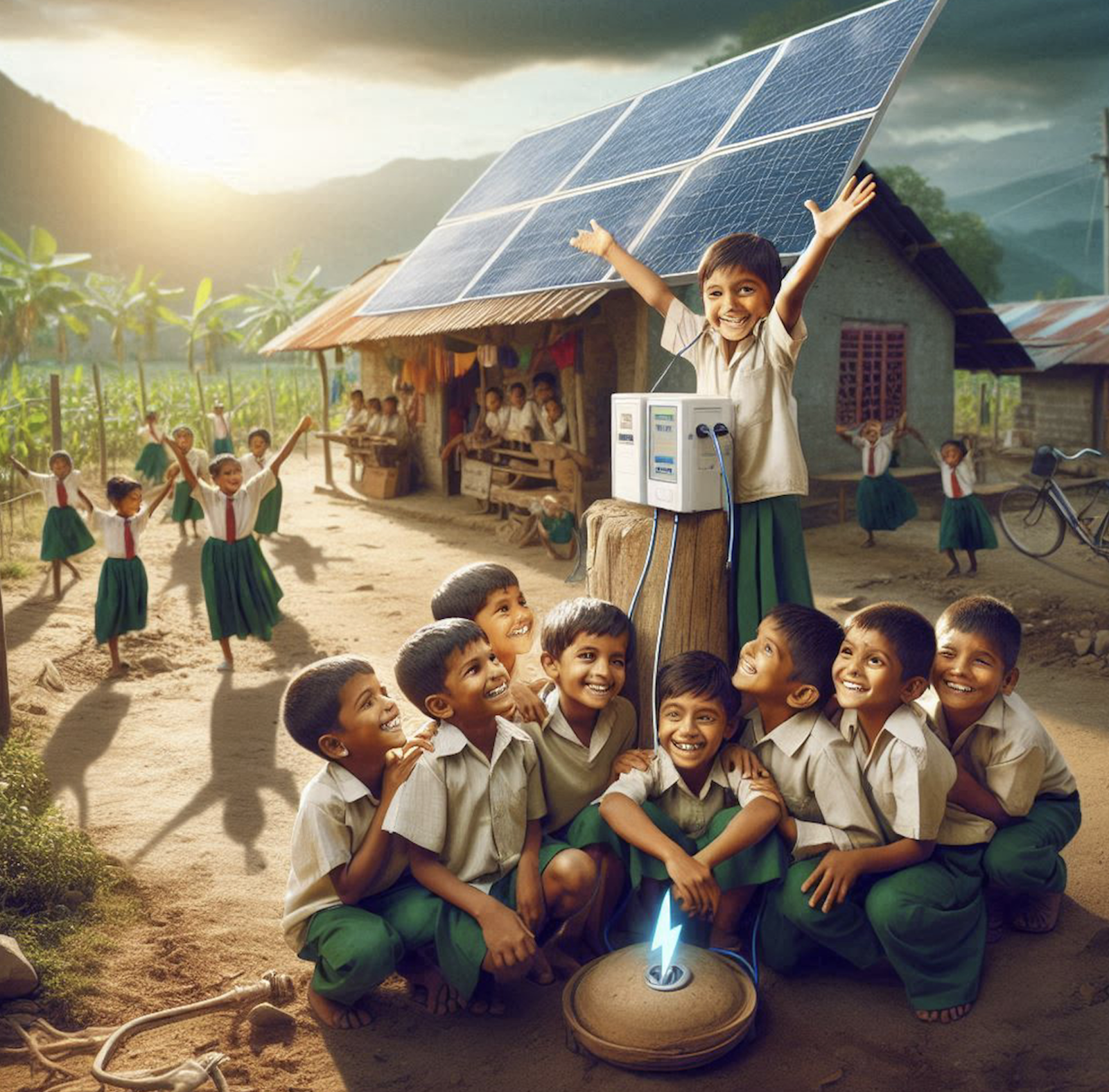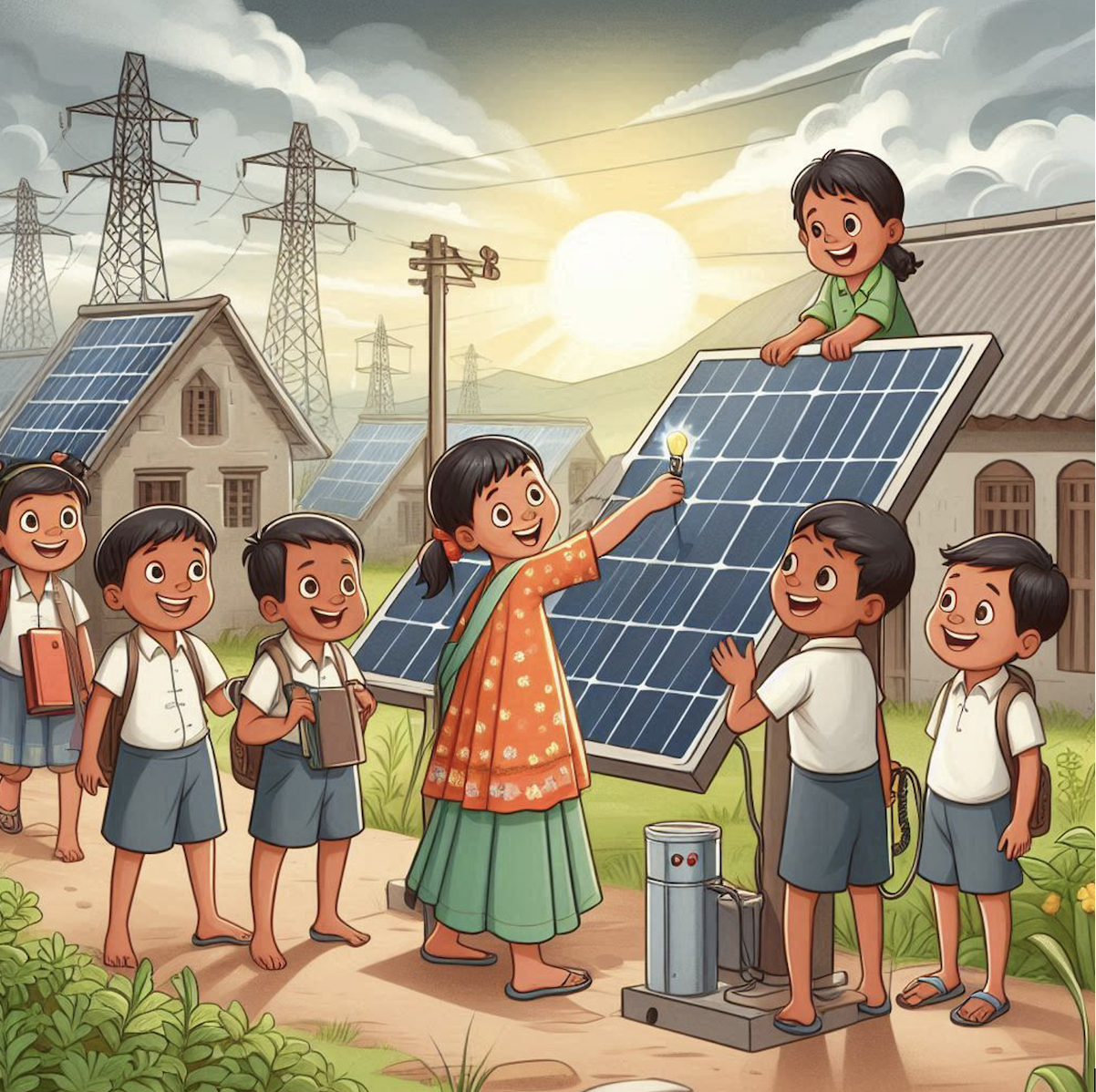
Corporate Social Responsibility - can make a difference in changing the landscape of Rural Education in India
Powering the Future: How Solarisation of Indian Schools Can Transform Education
India stands at the crossroads of an educational revolution—one that must be supported by reliable, sustainable, and inclusive infrastructure. With over 1.5 million schools spread across urban and rural areas, the country has the world’s largest school education system. Yet, nearly 28% of rural schools lack consistent electricity access, severely hampering the quality of education and technological integration. Solar energy, one of India's most abundant natural resources, offers a clean, scalable, and sustainable solution that can catalyze long-term change in the education sector.
This article explores how the solarisation of Indian schools can change the face of Indian education, improve learning outcomes, and contribute to national development goals.
The Current Energy-Education Deficit in Indian Schools
According to the Unified District Information System for Education (UDISE+) 2022–23:
Nearly 3.6 lakh schools (24%) either do not have electricity or face irregular supply.
Power shortages disrupt smart classrooms, e-learning, and lab sessions.
Schools in rural, tribal, and remote areas are disproportionately affected.
Without electricity, digital tools become redundant, fans and lights are inoperable, and water pumps for sanitation facilities don’t function—leading to poor learning environments and low attendance, especially among girls.
India’s Solar Potential: A Strategic Advantage
India receives 300–330 sunny days per year, with solar insolation ranging from 4–7 kWh/m²/day, making it ideal for decentralized solar installations. With a current installed solar capacity of over 80 GW (as of 2025) and a target of 280 GW by 2030, the ecosystem for solar adoption is maturing rapidly.
A 2–5 kW rooftop solar system is sufficient to power a typical rural or semi-urban school, enabling:
Digital classrooms
Basic lighting and ventilation
Solar water pumping and purification
Evening classes for remedial education and adult literacy
Benefits of Solarising Schools in India
1. Reliable and Uninterrupted Power Supply
Schools can operate independently of erratic grid supply or expensive diesel generators, ensuring continuous learning and administration even during outages.
2. Support for Digital Education
Government schemes like PM e-Vidya and DIKSHA rely on technology for delivery. Solar power enables the use of:
Computers, tablets, projectors
Internet routers and online content access
Smartboards and audio-visual aids
3. Extended Learning Opportunities
Solar lighting allows schools to conduct:
After-school tutoring
Evening classes for girls and working students
Community education programs
4. Improved Sanitation and Hygiene
Solar pumps ensure access to clean water for drinking and toilets—key to boosting girl student attendance and reducing dropouts during menstruation.
5. Climate and Environmental Education
By seeing solar panels in action, students gain hands-on exposure to renewable energy, sustainability, and climate responsibility, creating a generation of environmentally conscious citizens.
Case Studies: Impact of Solarised Schools
Rajasthan (Barmer District):
After installing 2kW rooftop solar systems in 100+ schools, attendance rose by 22%, and students had access to digital learning tools for the first time.Odisha (Ganjam District):
Solarisation led to a 30% increase in Class 10 pass rates, as schools were able to run uninterrupted classes and evening study sessions.Assam (Karbi Anglong):
In flood-prone tribal regions, solarised microgrids ensured that schools stayed open during blackouts, improving continuity of education.
Government & CSR Push for Solar in Education
PM-KUSUM & MNRE Rooftop Solar Scheme: Subsidies of 30–40% are available for off-grid solar systems for schools and public institutions.
Energy Efficiency Services Limited (EESL) and SECI (Solar Energy Corporation of India) are partnering with state governments for institutional solar rollouts.
Corporates like Tata Power, Adani Green, and ReNew Power are investing CSR funds in solar-powered educational projects.
NGOs like Barefoot College and SELCO Foundation have implemented solar education hubs in the most remote corners of the country.
Economic and Developmental Benefits
A typical solar system pays back its cost in 3–5 years through savings on energy bills.
Reduces dependency on polluting diesel generators and contributes to India’s Nationally Determined Contributions (NDCs) under the Paris Agreement.
Empowers local communities through job creation in installation, maintenance, and monitoring of solar systems.
Supports the United Nations Sustainable Development Goals (SDGs):
SDG 4: Quality Education
SDG 7: Affordable and Clean Energy
SDG 13: Climate Action
Vision for the Future
Imagine a future where every school in India—irrespective of its location—has access to uninterrupted electricity. Classrooms filled with light, computers buzzing with online learning, clean water in every tap, and students staying after sunset for extra help—all made possible through solar energy.
With the right policy support, funding mechanisms, and public-private partnerships, the solarisation of 1 lakh schools by 2030 is a highly achievable target—and one that will leave a lasting impact on the nation’s youth.
The transformation of Indian education cannot happen without powering its backbone: schools. Solar energy offers not just an environmental solution, but an educational imperative. By solarising our schools today, we are investing in a smarter, greener, and more inclusive India.
“Let the sun power our schools—and our future.”
Corporate Social Responsibility (CSR) initiatives focused on solarisation of rural education can play a transformative role in shaping the future of India—socially, economically, and environmentally.
Here’s a comprehensive breakdown of how:
1. Addressing the Energy Deficit in Rural Schools
Many rural schools still lack access to reliable electricity, hampering:
Basic lighting & ventilation
Digital learning tools
Fans or cooling systems during summer
Clean water and sanitation (pump motors, water purification)
CSR-funded solar systems provide consistent, off-grid power, which ensures better classroom environments and continuity of education.
2. Boosting Educational Outcomes
Solar-powered schools can:
Run digital classes and smart boards
Charge tablets/laptops for students
Enable evening classes or adult education programs
Operate during power outages
Corporate CSR can help bridge the rural-urban education gap and support the National Education Policy (NEP 2020)goals.
3. Encouraging Digital Inclusion
Solar energy enables:
Computer labs
Internet access
Online learning platforms (e.g., Diksha, e-Pathshala)
This prepares rural students for modern careers and helps build a tech-enabled workforce from the grassroots.
4. Promoting Sustainable Development Goals (SDGs)
CSR-led solar education aligns with multiple SDGs:
SDG 4: Quality Education
SDG 7: Affordable and Clean Energy
SDG 13: Climate Action
SDG 9: Industry, Innovation, and Infrastructure
This positions companies as serious contributors to global and national sustainability.
5. Building a Green and Skilled Workforce
Through solarisation programs, corporations can:
Introduce solar tech as a subject or skill
Train local youth in solar installation and maintenance
Create green jobs
This empowers communities and builds a future-ready green economy.
6. Enhancing Corporate Reputation & Social Impact
Corporations seen as solving real issues—like rural energy access—gain:
Stronger community trust
Government goodwill
Enhanced brand equity
Long-term stakeholder value
7. Strengthening Rural Infrastructure
Solar-powered schools often act as community hubs:
Hosting healthcare camps
Offering community internet access
Serving as shelters during disasters
CSR in solarisation can multiply community resilience and access to services.
8. Long-Term Economic Impact
Educated, energy-secure rural populations:
Contribute to India’s GDP
Reduce rural-urban migration
Strengthen local economies
Drive demand for clean technologies
This supports inclusive, balanced, and equitable development.
✅ Conclusion
Corporate CSR in the solarisation of rural education isn’t just charity—it’s a strategic investment in India’s future. It builds climate resilience, education equity, digital access, and rural empowerment all in one. With proper alignment to government schemes and public-private models, such CSR can fuel a generational transformation.
Article: By Dhiraj Thapa, Founder RestartGlobal






